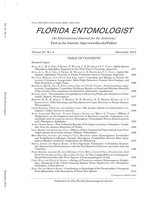The effects of various temperatures on the development and survival of Harmonia axyridis (Pallas) (Coleoptera: Coccinellidae) and Chrysoperla externa (Hagen) (Neuroptera: Chrysopidae) fed on Rhopalosiphum padi (Linnaeus) (Hemiptera: Aphididae) were studied, and some biological aspects among these predators were compared. On average, 70 nymphs of R. padi were added to each experimental unit with predator larvae and maintained at 12, 16, 20, 24, 28, or 32 °C. The duration (days) and survival (%) were measured for each immature stage of the two predator species. The developmental durations of all H. axyridis larval instars, the total larval stage, the pupal stage and total preimaginal stage were very long at 16 °C but shortest at 24 °C for the first, second and third larval instars and at 28  C for the fourth larval instar, the total larval stage and the total pre-imaginal stage. Both at 24 °C and 28 °C, 92% of H. axyridis completed the larva to adult cycle, whereas survival was significantly reduced in the 16 to 20 °C range. At the highest temperature (32 °C), 70% of H. axyridis did not reach adulthood. In the case of C. externa, the durations of development of all larval instars and the total larval stage became progressively shorter as the temperature increased from 12 to 20 °C. At still higher temperatures the developmental duration this insect remained almost constant. The predator completed the larval stage at all temperatures from 12 to 32 °C. However, at 12 and 16 °C, mortality of the larvae was greater than 88%, and 100% of the pupae perished. Although the lower threshold temperatures estimated for both predator species were very similar, the development period from larva to adult of H. axyridis was only 59% as long as that of C. externa. By comparing certain biological parameters including durations of development and survival rates of the two predator species, it is suggested that H. axyridis has intrinsic advantages over C. externa; however, additional factors must be considered when choosing the species of predator for biological control of R. padi on grass pastures in Brazil.
C for the fourth larval instar, the total larval stage and the total pre-imaginal stage. Both at 24 °C and 28 °C, 92% of H. axyridis completed the larva to adult cycle, whereas survival was significantly reduced in the 16 to 20 °C range. At the highest temperature (32 °C), 70% of H. axyridis did not reach adulthood. In the case of C. externa, the durations of development of all larval instars and the total larval stage became progressively shorter as the temperature increased from 12 to 20 °C. At still higher temperatures the developmental duration this insect remained almost constant. The predator completed the larval stage at all temperatures from 12 to 32 °C. However, at 12 and 16 °C, mortality of the larvae was greater than 88%, and 100% of the pupae perished. Although the lower threshold temperatures estimated for both predator species were very similar, the development period from larva to adult of H. axyridis was only 59% as long as that of C. externa. By comparing certain biological parameters including durations of development and survival rates of the two predator species, it is suggested that H. axyridis has intrinsic advantages over C. externa; however, additional factors must be considered when choosing the species of predator for biological control of R. padi on grass pastures in Brazil.
How to translate text using browser tools
1 December 2014
Effects of Temperature on Development and Survival of Harmonia axyridis (Coleoptera: Coccinellidae) and Chrysoperla externa (Neuroptera: Chrysopidae) Fed on Rhopalosiphum padi (Hemiptera: Aphididae)
Alexander Machado Auad,
Juliana Cristina Santos,
Marcy G. Fonseca





